[Joey Baird, co-founder, The Wisconsin Vegetable Gardener]
Welcome, I’m Joey Baird.
[Holly Baird, co-founder, The Wisconsin Vegetable Gardener]
And I’m Holly Baird.
[Joey Baird]
And we are the founders of thewisconsinvegetablegardener.com, a website for all levels of gardeners no matter where you’re located at in the world. And today we’re going to talk about growing potatoes in containers and the ground.
Now, how many of you have grown potatoes, or have never grown potatoes before? Any -any newbies?
[Wide shot of audience with a few members raising their hands]
Okay. How many of you have grown potatoes, but wish to grow them better?
[Wide shot of audience with most of the members raising their hands]
That should be the rest of you. Okay. So, we’re going to go over the basics. We’ve gardened a combination, between Holly and myself, for 25 years. Some of you may be far beyond that in levels of education. This is what we have found works best for us. And we hope –
[slide with the title, What are potatoes with the definition of potato and sweet potato]
– that it works the best for you.
[Holly Baird]
So, what is a potato? Well, there’s a difference between a potato and a sweet potato. A regular potato is a starchy tuberous crop, and it is from the perennial nightshade family. Other vegetables that are in the same family are eggplants and tomatoes. They’re similar on the nightshade family. And the sweet potatoes actually a different type of potato and it’s more related to the morning glory family and it’s a larger, sweeter root.
[Joey Baird, under the slide]
So, with that being said –
[Joey Baird, on camera]
– growing potatoes are just about 5,000 different varieties of potatoes in the world. Obviously, they’re not all available at your local home and garden center or through catalogs online, but that gives you an idea of what we’re dealing with on a grand scheme of varieties.
[Holly Baird]
And they originally are from South America –
[slide titled, Growing Potatoes with potato facts underneath in a bulleted list]
– but overtime through genetic mutation, and through cross breeding, now they’re grown all over the world and a lot of them are more acclimated to different temperatures and different climates.
[Joey Baird, under the slide]
Now you may hear about genetically modified crops or potatoes. Some – there are some of those available in the market.
[Joey Baird, on camera]
You are not going to be able to purchase those at your garden centers, or independent or online catalog, because the big biotech companies require the big ag farmers or those who grow genetically modified crops or G.M.O.s to sign contracts in which there’s a lot of agreements and a lot of stuff that goes on there, so you’re never going to be able to buy one or plant one because they’re not going to ask you to sign something with a whole lot of legality to it. So, you don’t have to worry about that. It’s just – you’re going to be able to buy certified organic seed potatoes no matter where you go to find them.
[Holly Baird]
Now, there are some potato growing myths.
[slide titled, Potato Growing Myths with a list of them underneath]
One is you cannot grow store bought potatoes. And this is not true. Now, you may not be able to regrow a – a conventional growing potato, but if you buy organic potatoes, you can regrow those.
[Joey Baird, underneath the slide]
Many of the potatoes in which you purchase from your big box grocery store are sprayed with what is called a growth inhibitor and that is a chemical that greatly slows down the production of the sprouts, or the eyes and we’ll talk about in a moment, on your potato, so it’s more appealing to the buyer, to the grocery store consumer –
[Joey Baird, on camera]
– and it has a better, longer shelf life. So, that’s why, many times you’re not going to find potatoes that are non-organic sprouting.
There are a couple different varieties of potatoes just like there are tomatoes. There’s determinate and indeterminate varieties of potatoes.
[slide titled, Determinate Versus Indeterminate Potatoes with a bulleted list of differences below]
[Holly Baird, under the slide]
And just like tomatoes, the determinant variety is going to grow to a certain point, and then that will be it. It will just produce as many potatoes as it is allowed in the plant, and that will be the end of it. And the indeterminate variety is the long season or the late season potatoes.
[Holly Baird, on camera]
And those continue to grow throughout the season giving you more of a harvest.
[Joey Baird]
And on the screen, on the lower portion of the screen, it indicates some varieties in which –
[return to the Determinate Versus Indeterminate slide]
– are longer variety, an indeterminate variety of potatoes.
So, when we talk about varieties of indeterminate –
[new slide of Potato Growing Myths featuring several ways to grow potatoes in four square feet including illustrated directions for a potato box, cage and old tires]
– and determinate varieties, there are what is to be said garden myths. Now, has any of you attempted to perform any of the growing techniques that are on the screen right now?
[Joey Baird, on camera]
Whether box, tire, or cage?
[Wide shot of audience with very few members raising their hands]
Okay, any of you have any success with any of those to the stature that you would –
[Wide shot of audience with two or three people raising their hands]
– okay, some people have some success.
With our experience, what we have found is that none of these are as successful as regular, putting them on the ground or in a container. The image on the left of the screen –
[return to the Potato Growing Myths slide with the illustrated potato box on the lower left]
– which is the box or the two – two-by-two, four-foot-tall box you’re supposed to be able to do that and grow a hundred pounds of potatoes in it. Well, through the gardening community on YouTube and other individuals whom we’ve spoke to, this was an article that got a little blown out of proportion.
The initial – initial person who posted this got a hundred pounds of potatoes out of that box. But what they failed to indicate before putting it on social media becoming clickbait, is on the next slide –
[new slide titled, Why does it not work? and the statement of why boxes dont work]
– you’ll see what we’re talking about on the right-hand side, they planted one row of potatoes, they began to sprout, then they put more soil on it, and planted another row on top of that, in which you had potatoes throughout the box. So –
[Holly Baird, underneath the slide]
So, the myth is, that instead of doing the two different rows separately, you plant two rows together, and then you’re going to get them all to grow phenomenally. And that’s simply not true. And that’s not what’s usually told when you find –
[Holly Baird, on camera]
– this information online. So, it’s not that simple; it is possible, but you have to do two different plantings.
[Joey Baird, on camera]
The – the thought process is that stalk will continue to grow is we’re all told to backfill or cover the stalk up and more root development will occur which will occur more tubers. And we just simply never found that in our garden to be true at all.
[Holly Baird, on camera]
So, in our experience, yes, this may work for some people.
[return to the Potato Growing Myths slide with a big, brown X through it]
You can try to modify as – if you choose to, but for the most part, growing them in a container or the ground is what’s going to get you the most yield or even a straw bale. And growing in tires is not advisable for really any vegetable.
[Joey Baird, underneath the slide]
Though there have been studies that prove there’s no leeching out of the chemicals into the soil, it’s a preference that you have to make for your own garden and for those who are consuming the food in which you grow those crops out of.
[Joey Baird, on camera]
So, what are you going – what – what potatoes are you gonna plant? Will it really determines what’s the end result of what you’re going to use the potatoes for?
[Holly Baird, on camera]
So, if you’re going to use it for roasting –
[slide titled, What Potatoes To Plant and a bulleted list below of things that you are going to use the potatoes for, including – roasting, mashing, and canning]
– baking, freezing, mashing, canning, maybe there’s a specific variety you enjoy to eat, maybe there’s something that you – you feel is more beneficial to you, and that’s how you’re going to determine what you want to grow.
[Joey Baird, underneath the slide]
When you go purchase potatoes at your garden center or online, they have a description about the potato, and it does indicate good for canning, or good for cooking. If you’re intentions are to can these, pressure can these, don’t buy a potato that says not good for canning or doesn’t mention that. Use – be rational about this and buy the potato, not because of the prettiness of it, but for the functionality of it and – and the end result of what your intentions are.
[Joey Baird, on camera]
So, we use potatoes that are certified seed potatoes from a farm from Bridgewater, Maine. They’re a family farm that’s been in operation for 41 years. And the nice thing –
[slide titled, Potatoes We Use with a photography below of the seed packet that the Bairds use along with the logo of the company from which they buy them]
– there’s 26 specialty variety potatoes they sell every year. We never got a bad potato or a bad seed potato from them. And the nice thing about that farm is the mom and dad are passing the farm down to their children and continuing the generation of farming and they’re all certified non-G.M.O., and they’re very anti-G.M.O. in – in that manner.
[new slide titled Types of Potatoes with a bulleted list of early, mid and late-season potatoes]
So, you can get your seed potatoes from online catalogs, independent garden centers, that’s just where we choose to grow them.
[Holly Baird, under the slide]
So, there’s three types of potatoes when it comes to when you’re going to plant them or how long they take to grow. And there’s the early season, which is about 75 to 90 days. There’s the mid-season which is about 95 to 110 days. And the late season which is the 120-135 days.
[Joey Baird, under the slide]
Now, we are – we’ve played around with the days and the planting. We were able to get an early crop in –
[Joey Baird, on camera]
– at the normal time about mid – early – late April, early May, and then once the garlic comes out, we were able to put another crop in of mid varieties and get a late fall crop. That – that worked very well last year, and we’ll continue to practice and finesse our numbers to where we can have several harvestings of potatoes all summer long.
Now, chitting the potatoes, let’s talk about this. This is a way in order to speed up the development of the potatoes tuber and you can do it in a couple of different ways.
[slide titled, Chitting potatoes with the description of chitting as a bulleted list]
[Holly Baird, under the slide]
So, one way you can do that is you just allow them to start their sprouts naturally. You want to keep them out of direct sunlight, and about a room temperature room, and then just keep them separate from each other. So, you can use an egg carton, or even, like, a seed tray, and you want to do this about six weeks before planting.
[Joey Baird, under the slide]
Now, by putting it in the corner in ambient light, we don’t want under grow lights or direct sunlight. By the time that six weeks has elapsed, you will have about –
[Joey Baird, on camera]
– maybe at best an inch sprout on that potato. And that simply just to increase the speed in which the potato will root in the ground and the sooner you can get potatoes. And –
[Holly Baird]
Is it necessary to chit your potatoes?
[slide titled, Do You Need to Chit? with the pros and cons of chitting below in a bulleted list]
No, it’s not. It just – it does give your potatoes a chance to, kind of, get a jump – jump start on the growth, but it doesn’t make a difference. If you do live in a shorter season area, maybe more in northern Wisconsin then you could chit your potatoes and you would have a faster season.
[Joey Baird, under the slide]
There is a number of commercial growers that just simply take a potato and throw it in the ground, and it grows just fine. So, it’s not something that’s required, but we do it in order to help speed up and for the next reason, in a moment –
[new slide titled Potato Eyes To Long Cut or Leave with recommendation below in a bulleted list and with a photo of a potato with long sprouts in the lower right corner]
– to get more seed potatoes out of each potato.
[Holly Baird, under the slide]
So, this just talks about whether when the sprouts get really long, whether or not you want to cut – trim them back, or to let them grow, and you just want to let them keep growing, you don’t want to cut them back.
[Joey Baird, under the slide]
The tuber itself is the energy source, in which the new plant will emerge from and grow. So, by removing those sprouts –
[Joey Baird, on camera]
– and I’m talking ones that are on the lower right-hand side of the screen, that are one or two inches, you want to leave those alone. Now, if you have- though we’ve all had that – we found them in the cupboard –
[return to the Potato Eyes slide]
– and they’re like 16 feet long and they’re all, yeah.
[laughter]
Those – those were – we’re, start over, but with these, I would remove the one on the right-hand side and leave the two on the left-hand side and plant that potato as is, to allow two stalks to emerge and grow properly.
[new slide titled Cutting Potatoes with diagrams and information about how to cut potatoes]
What happens when you snap those off, the energy and the tuber, if it’s large enough –
[Joey Baird, on camera]
– it has to go through a recovery process to regenerate that growth and slows down the – the speed of the plant developing and the harvest, but also can reduce the size and -and the health of the po-potato as well.
[Holly Baird]
So, you can cut your seed potatoes if you – it’s large enough and you have more than one sprout.
[return to the Cutting Potatoes slide]
You don’t want to cut them smaller than the size of about a regular sized chicken egg. So, as you can see here, you have a three-ounce potato. You don’t want to cut that. And then I’ll wait to a 10 ounce or larger potato you can get four pieces, but you want to make sure each piece has an eye or a sprout on it.
[Joey Baird, under the slide]
Now you don’t have to cut them as we indicated earlier, you can simply throw them in the ground, but this is an advantage to increase the number of plants that you’ll have in your garden or your containers.
Studies have shown whether you plant the whole potato –
[Joey Baird, on camera]
– or you cut it up and divide it, the yield is the same either way. You’re not losing or gaining any additional yield per plant, what you’re gaining is additional plants in order to make your row fill out better or get more in each row or container. So, thats – that’s a way that we can stretch the dollar of the seed potatoes in which we have purchased.
[Holly Baird]
Now when you do this, you want to make sure you let them sit for a day or two before you plant them, so they get the nice scab over the cut portion. But you can also sulfur – do an agricultural sulfur on them, which is called dusting.
[slide with the title, To Sulfur or Not? with the pros of sulfur in a bulleted list]
We don’t do this, but some people do.
[Joey Baird, under the slide]
And you can dust them with sulfur the day if you’re cutting it and planting it today you can do that right now. Just leaving it over that two or three-day period will callus over, and kind of put a hard shell just like a wound you would have on your arm, and really prevents a lot of diseases, insects, bugs, from burrowing in and eating the inside of your potato which decreases the number of potatoes that you grow, because the bugs have ate it.
[Joey Baird, on camera]
So that’s what we do. And either way it works fine.
[Holly Baird]
So, now you’re ready to plant your potatoes. You need to think about when and where you want to plant them.
[slide titled, Where and when to Plant? with a list of ideal conditions]
And so, the key is you want to have full sun. And that means about six to 12 hours of sun per day. You want to make sure that when you plant your potatoes, that you have a minimum soil temperature of 45 degrees. That doesn’t mean 45 degrees ambient air temperature. That means if you take a thermometer, put it into the – the soil a couple of inches down, and then that soil is 45 degrees.
[Joey Baird, under the slide]
50 degrees is the best temperature to start with. We’ve done 45 for the last several years, worked very well. And to acquire that temperature, the ordinary meat thermometer out of the kitchen works very well. It’s usually about a minimum of six inches in – in thickness. You can shove it in and get a good root temperature –
[Joey Baird, on camera]
– root zone temperature, just be sure you clean it before you give it back to your wife and – and she use it for something else. But it works very well, you get an instant reading, and you know what it’s at. But again, ambient temperature means nothing. Many vegetables across the board that your planting, it all revolves around that root zone at temperature, whether or not the plant’s going to succeed or not.
So, when to plant and where to plant.
[slide titled, Where to and when to Plant? continued with the ideal conditions listed]
Well obviously, we want well-draining soil, whether it’s in a ground or container. We want to avoid heavy clay soil because that dense soil will hamper the development, or the – the largeness of the tubers and you want to plant two weeks before your last average frost date. And you can find that by talking to your local extension office or just going to your favorite search engine and typing in last average frost state, insert your zip code there, and that’s an average of over the last 10 years of calculations. If you’re concerned about pH –
[Joey Baird, on camera]
– you can do a pH test. Send it to the local university for a small fee and you can get detailed information whether you need to add or take away or what you need to do to increase the fertility of the soil. But four-eight, six-five is the optimal range. Most gardens are about six-five, seven-two, somewhere in that range for a general understanding on what pH is and where some people are setting at.
[Holly Baird]
So, we talked about the time of the plant, but you just want to make sure you have a nice loose and loamy –
[slide titled, Time to Plant with a photo of loose, loamy soil below]
– soil for your potatoes.
[new slide titled, Organic Matter with six photos of different kinds of compost material to use]
[Joey Baird, under the slide]
Full sun again, as much as you can give it preferably. Organic matter is important. We’re – were going to talk about the fertile – fertile – fertilizers that are required to help increase the benefits of the potato. But if you can continue to pour good organic matter into your garden, your raised beds, your containers, that is obviously a good thing. Dry grass clippings, upper right – upper left corner. We used certified leaf compost, upper right. Dried grass clip – or shredded leaves. Dry leaves. We try to capture all the leaves in the fall on both sides of the house and across the street, the neighbors are more than happy to put them in the street for us, as well as used coffee grounds will also increase the fertilization of your garden.
Coffee grounds are 2 – 2% nitrogen and 0.2% phosphorous and 0.7% potassium, and you can purchase –
[Joey Baird, on camera]
– you don’t have to purchase them, you can get them at your local coffee shop, just call ahead. They’re more than happy to allow you to bring a bucket in fill it within a day, and they’re happy to see it go because it’s not going to the landfill. And you mix it in to your garden. I would go about a pound every two- or three-square feet and you can even kind of play with that based on how much you might – how bad the soil is and what you’re trying to accomplish.
[Holly Baird]
So, the best weather for your potatoes would be –
[slide titled, Best Weather with at bulleted list of the ideal weather conditions for potatoes]
– where the daytime temperatures are about 60-65 degrees. And at night below 57 degrees. This is not always possible, but that is the ideal temperature for a potato growing conditions.
[Joey Baird, under the slide]
That is what the book says, would be perfect if we could have the world that we can control. But it’s not, so, when the weather is hot, the top of the plants can wilt and not produce very well. We don’t have to worry about this in Wisconsin that much, but in other southern states, if the soil temperature reaches 85 degrees Fahrenheit, the plant will – it – it dies off. I’ve never seen 85-degree soil so we don’t have to worry about that here. But there are some states in which that is a concern.
And the biggest potato producing state is Idaho and they have cool summers and – and nights and that’s why they are one of the leading producers of potatoes in the country –
[Joey Baird, on camera]
– because they have optimal soil and great temperatures. And –
[Holly Baird]
So, when you’re putting your potatoes in the ground, you want to plant them about, we plant our about six to eight inches down –
[slide titled, Planting Time In Ground with three photos of potatoes being planted in rows 6-8 inches deep and 9-12 inches apart]
– into the soil and about nine to 12 inches apart.
[Joey Baird, under the slide]
Now on the screen there, on the right – on the left-hand side, it’s a traditional trench method. Six inches deep, the eyes are pointing up on the potato, that seems common sense, but some people get excited and just throw them on the ground and you got to have the eyes pointing skyward otherwise they don’t grow that well.
The center picture is – I went ahead and created the furls like we’re all familiar with, the hilling-up process. Then I went through with the post hoe digger and simply dug down six inches and dropped potatoes in each hole. Experimented with it, worked very well and then re-hilled up on the right-hand side of the screen. Both produced fairly well po-potatoes. So, either way, you know, it’s how much work you want to put into it is what it comes down to.
[new slide titled, Fertilizer Requirement with a bulleted list of how to fertilize your potatoes]
[Joey Baird, under the slide]
So now, we’re going to talk about the fertilization or the fertilizer that is needed for your potatoes and what is recommended.
[Holly Baird, under the slide]
So, you want to get a fertilizer with a higher potassium and phosphorus –
[Joey Baird, under the slide]
– Numbers.
[Holly Baird, under the slide]
– numbers compared to the nitrogen content.
[Joey Baird, under the slide]
That – that is the second and third number on your fertilizer bag. Nitrogen is always the first.
[Holly Baird, under the slide]
And then later in the season, you can fertilize them again. We haven’t done this, but we’re gonna – we are going to try it this summer to see if it makes a difference.
[Joey Baird, under the slide]
And you can just use an all-purpose organic fertilizer or inorganic fertilizer –
[Joey Baird, on camera]
– based on your growing beliefs. Whenever you get to that organic fertilizer, basically most plants won’t pick up more than a five-five-five, in that range, five to nine is about your average organic level. When you see the fertilizers, the triple 15 or the triple 20, those are synthetic fertilizers because there’s no such thing as those type of numbers that can be organically created in nature.
[Holly Baird]
And then you can mix in a solid organic fertilizer. And as we’ve mentioned –
[slide titled, Fertilizer Requirement, continued continuing the bulleted list of requirements]
– you want to check the plant mid-season if you choose to, and then add extra fertilizer if the leaves are looking slightly – slightly yellow or if you don’t – it seems like they’re growing very well.
[Joey Baird, under the slide]
As well as you can add compost, rotted manure. Do not use fresh manure because you will kill your plants. Most animal, horse – animal manure, cow manure is very high and – and has a hot nitrogen in it will just burn – burn your plants up.
[Joey Baird, on camera]
So, you want it to age for a year and put it in through a good composting process. And it has great nutrients, but you have to use it when it’s appropriate time. You just can’t throw it right in your garden.
[Holly Baird]
So, this past season, we tried something called no dig potatoes.
[slide with the title, No Dig Potatoes with 2 photos of the process]
And it was – well, Ill let Joe explain
[Joey Baird, under the slide]
It worked very well. On the left-hand side of the screen, we took an experimental patch of three- foot – two-foot-wide by three feet long, added one inch of compost as a bedding material. Right hand side of the screen, I went ahead and spaced the potatoes nine to 12 inches apart added the requirement – the act – the correct fertilizer requirements on the back of the package, and then we went ahead and covered the potatoes –
[new slide of No Dig Potatoes with 2 more photos of the process underneath]
– with regular leaves, dry grass, clipping shredded paper, yard – yard – yard debris, whatever we had, about 18 to 20 inches high. And throughout the summer, I continued to try to find materials in that range to cover them up. And they sprouted, they grew much better. These are finger link potatoes. They grew much better than the finger links we had in the ground, and when it was time to harvest, we simply just raked back the leaves picked the potatoes up and put them in the box and – and walked in the house with it. Worked very well, very low maintenance, and we will continue to exercise and try different methods of no dig this coming year.
[Holly Baird, under the slide]
And there was no weeds.
[Joey Baird, on camera]
No, very minimal –
[Holly Baird]
Wasnt weeds at all – very minimal.
[Joey Baird]
– weeds with that that procedure. So, that’s something that maybe you’re not a big fan of digging a lot –
[return to the No Dig Potatoes slide]
– that may be one way to go about going with a no dig method.
[slide with the title, Container Potatoes with directions and a photo of container potatoes]
[Joey Baird, under the slide]
So, now we’re going to talk about container gardening. And this may be a way, again, easier than to traditionally dig a trench, or bury them in the ground.
[Holly Baird, under the slide]
Not that many people realize you can grow potatoes in a container, but it is – it is very possible. So, what you want to do is you want to take your container and you fill it about a third of the way with a good potting soil compost, and then you plant your potatoes, and then you fill it back up with the rest of the compost or soil.
[Joey Baird, under the slide]
We’re not worrying about topping it off every time the – the sprouts emerge through the ground – through the soil, because we believe there is no – no – no proof that putting more sprouts on the stalk creates more potatoes.
[Joey Baird]
So, that’s why we go about this way. So, here’s a rough guide of how many potatoes you can put in a grow bag container bucket.
[slide titled Container Potatoes, cont. with next steps and a photo of several potatoes growing in containers]
And with any device that you’re growing your potatoes in, please put holes in the bottom of them, because potatoes can’t swim, and they can’t breathe underwater, and they will die just like many other crops in which we grow in our garden.
So, one gal – one seed potato in a three-gallon pot. Again, here’s the – the key with these containers. The larger the container, the larger the mass of soil, the more moisture is contained in that soil, the slower that will dry out. So, keep that in mind. 10-gallon grow bag or container, three- to four-seed potatoes spaces evenly, and 15-gallon, five-seed potatoes and – and on up. There’s many grow bags we use –
[Joey Baird, on camera]
– some 60-gallon grow bags that work really well. And again, place them evenly because we have to have adequate space for the seed potatoes to grow tubers correctly.
[Holly Baird]
So, this a little question and answer that we have here.
[slide titled Q&A with questions about container growing and the answers]
At the time potatoes do put on flowers and they bloom, and some people say if you cut the flowers off, it’s going to take energy away from the flower production and put it back into the plant. And that’s not true. Cutting the flowers off is not going to make a difference in the growth of the potato.
[Joey Baird, under the slide]
This was a big thing in the U.K. several years ago. And this is from the North Dakota State University extension office potato specialist. So, just allow them, let the bees come in, take the pollen they need to create honey –
[Joey Baird, on camera]
– and let – enjoy the – enjoy the blooms. Many varieties bloom many different colors and that’s just some of what we’ve had.
Now you can simply as just cut a bag of compost open and plant your potatoes in that. That’s what we’ve done. That is a two cubic foot bag of certified leave compost which we slit down the side, laid on the ground, and took another two cubic foot bag and topped it off, and then simply put three seed potatoes in it, and let it be.
Now we do want to remember to water this, and it did work very well and then at the end of the season –
[slide with the title Bag of Compost with a photo of potatoes growing in a bag of compost]
– you dump your compost out, dig – pull your potatoes, and then youre – youve got – you’re helping increase the fertilization of the soil the next year if you’re in – in a garden bed. Or you can put it in a container and save it and use it a little bit next year.
[new slide with two photos of potato seeds growing on potato vines]
Now, here is – here is something – go ahead Holly, you can explain this.
[Holly Baird, under the slide]
And then, you’ll see this on your potatoes. Your potato plants by the flowers a lot of times and those little green balls are basically seeds. They’re potato seeds. And you don’t want to eat those. You don’t want to eat the po-potato flowers either. But if you see those, that’s what they are.
[Joey Baird, under the slide]
Theyre – they’re true seeds. They are extremely toxic. So, that’s kind of that defense mechanism that the potato puts on to ward off predators from eating the top of the – the plant. But each – each seed contains hundreds of – each pod contains hundreds of little seeds in which there are gardeners that try to and do successfully grow those seeds into mature potato plants. It’s much easier just to take the tuber from a certified seed potato divide it and plant it. But the, you know, we all have things that we enjoy trying to experiment with and this is one of them.
[Joey Baird, on camera]
Not all varieties of potatoes will produce these types of seed bulbs on them. So, some will, some wont, and it also depends on the stress of the plant during the growing season. So again, we have to water our tomato – our potatoes. It goes without saying, but we want to make sure the soil is damp, not soggy. About an inch of water a week is really –
[slide titled, Watering with a list of water tips below with an illustration of a hand holding a water bucket watering a garden]
– a good standard to go by. And – and if youre really – if it’s really a very warm summer, go out there, stick your finger in the soil, see if it feels damp, if it feels dry, go ahead and water it, or don’t water it. It’s – its pretty common sense, but, you know, we want to make sure everybody’s in the same level of growing potatoes.
[new slide with the title Problems and a bulleted list of potential problem areas]
[Holly Baird, under the slide]
Just – just like any other plant in your garden there’s a possibility for problems. And we picked three common problems that people face with potato gardening and this one is aphids. Aphids live in a lot of places in our garden. What they do is they’re basically like a tick on a human. They’re sucking the lifeblood out of your plants. They’re really tiny, they’re usually green or yellow, sometimes black or brown in color. And if you get too many of them, they’re just going to – theyre gonna cause discoloration of the leaves –
[Holly Baird, on camera]
– and they’re just going to eat the green life out of your plants.
[Joey Baird]
Suck the green life out of your plants – out of your plants. Now these – you want to be very vigil about this, because if you do have an infestation, they can reproduce without breeding every two weeks. So, things can get out of control very, very, quickly whether in your garden or in a grow room for that instance and that’s how we lost a whole bunch of peppers two years ago, was because of aphid infestation and just devastated everything within just a couple of days before we actually understood what was going on.
[Holly Baird]
And you can spray –
[slide titled, Problems continued, with a photo of an aphid and cures to get rid of them]
– them down with a soapy diluted water that will kill them. Or you can spray neem oil or canola oil on your plant. If you choose to use neem oil, you want to make sure that you purchase a cold-pressed neem oil. There’s a lot of neem oil at your local garden center. And it’s usually once the harvest the good parts of the neem oil and leave the – the bad parts.
[Joey Baird, under the slide]
The cold-pressed neem oil is how – it’s top type, the number one press of the neem oil goes to the cosmetic industry, and then the garden industry, kind of, gets some of the leftover sometimes.
[Joey Baird, on camera]
But there are good reputable companies out there that sells the cold-pressed neem oil and that is the most effective for this type of application in controlling the aphid insect.
And another problem we have is early blight.
[Holly Baird]
So, early blight is common. It lives in your soil and it does affect –
[slide titled Problems continued with a photo of early blight and a list of how to identify it]
– it can affect many of the plants in your garden, but it does affect the – the nightshade family plants a little bit more. And you know you’ve gotten it. Your – your leaves will turn kind of a yellow color. They’ll look kind of sunken. Sometimes they’ll have brown spots on them. And this is just something that, if you’ve experienced a lot of rain, it’s because it lives in the soil and splashing back on to your plants. So, one thing you can do –
[new slide with another photo of a blighted plant along with a bulleted list of steps you can take to cure it]
– to get rid of it is to mulch around your plants. Not necessarily get rid of it, but help prevent it, because the mulch around your plants it helps the rain or the water from splashing back on to your plants.
[Joey Baird, on camera]
Also based on the type of variety of potato you’re growing some are more susceptible to early blight than others. We found that all of our finger link potatoes last year were susceptible and almost eradicated all of them. The rest of the potatoes that were growing one foot away from the – the finger links had no effect whatsoever. So, keep that in mind. Again, mulching is a great deterrent. Also, like tomatoes, and potato growing, we also apply some yellow whole grain corn meal which has a beneficial bacteria in it Trichoderma, that helps fight that bad bacteria which is the early blight on your soil. And that seems to greatly reduce – it doesn’t prevent 100%, but greatly reduces that – that spores from splashing up and affecting your plant.
[Holly Baird]
And then we have late blight. And unfortunately –
[slide with the title Problems continued with late blight and how to identify it]
– this – this does happen. It happened to us last year to our tomato plants very late in the season. And you know you’ll get it because the leaves all start turning really brown and get really brittle. And late blight is an airborne disease. So, if you do get late blight on any of your plants, you don’t want to put them in your compost. You don’t want to give them to the city. You just want to simply throw them in the trash.
[Joey Baird, under the slide]
There are some copper fungicides that are preventative measures or slows it down prior to getting it –
[new slide with a photo of a plant with late blight and prevention steps in a bulleted list]
– but you have to be ahead of the game. And again, you don’t want to put these in your compost pile or the municipality because if the spores are kept warm enough, which is what most compost piles do over the winter if done correctly, they can be reintroduced into your garden the following year, or the municipality in which you shipped into or gave them to the city. Somebody else has picked them up, put them in their garden, and it can reintroduce itself and cause more problems. So, just throw them in the trash. Be a good gardener and – and help other people out by not spreading diseases that you’re aware – that -that obviously you know what they are.
[Holly Baird]
So, when – when’s to harvest? When’s the best time to harvest your potatoes? You do not want to harvest them –
[slide titled, When to Harvest and a bulleted list of harvesting tips]
– any sooner than 10 weeks. Once you reached the 10-week point, you should let them grow longer. But if you want the – the new potatoes, you can harvest them then. And then you want to harvest them after the flowers have appeared and died and generally when the growth dies back and the plants are starting to fall over, look really yellow and brown, then you know they’re really ready to harvest. And the longer you let them grow, the better.
[Joey Baird, on camera]
You can harvest them early when the flowers appear, but its not – many gardeners will say, Oh, the flowers appeared, I can dig the potatoes. Your tubers are still developing until the plant gets into that third stage and – and begins to die back. You can harvest them, but, you know, we always wait and try to get as much out of – out of the potato as possible.
Now a good range, or a good guide in what you should be getting out of your garden, about for every one pound of potatoes you put in, most charts will say you should get about 10 pounds of potatoes out. That’s a good range, some people will get 12 to one or 12 pounds out for every one pound. Some good gardeners are getting one pound – 15 pounds out for every one pound they put in. So, really determines the fertilization of your soil, the type of potato, the conditions that you’re growing them in. We’re still building the soil in one of our gardens and we only have a one pound in that we planted, and we get 4.6 pounds out. So, that was one garden we’re working on. We’d like to get that big turnaround, that 15 to one ratio.
So, we – once we’ve harvest them, we’ve got to store them. And there’s a number of ways in doing this.
[slide titled, Proper Storage with a bulleted list of storing tips below]
We choose to go 50-50. Half the potatoes get stored this way and the other half we pressure can.
[Holly Baird, under the slide]
So, when you – when you harvest your potatoes before you store them, you do not want to wash them. Leaving that soil on your potatoes will help keep them from rotting faster, just, kind of, seals them in. And then you want to check for damaged potatoes. Any damaged potatoes you want to keep them out of storage, just go ahead and eat them right away so that you’re not putting the bad potatoes in with the good potatoes. And then you want to keep them in a cool dry place.
[Holly Baird, on camera]
In a mesh bag, a wicker basket, a paper bag, a cardboard box, you don’t want to put them in plastic.
[Joey Baird]
Now, many of us probably don’t have root cellars, but maybe we have a concrete basement or garage. By putting them in that cardboard box and sitting them directly on the concrete, that actually helps slow down and cool down the core of that potato and just prolongs the life just a little bit longer –
[new slide on Proper Storage with an illustration of a refrigerator with a red circled slash through it and more storge tips in a list]
– to get more life out of it.
[Holly Baird, under the slide]
Yes, so like a garage, attic, stairs, basement. You do not want to store them in your refrigerator. If you put fresh potatoes or any potatoes in your refrigerator, it changes the sugar molecules of the potato and turn it more into a sugar as opposed to a starch.
[Joey Baird, under the slide]
Just like you do – don’t put tomatoes in the refrigerator. It doesn’t end well, it tastes horrible. Same thing with potatoes.
[new slide titled, Q&A with a question and answer below it]
So, here’s another question and answer that gets asked a lot.
[Holly Baird, under the slide]
So, what is the natural way to stop potatoes from sprouting in storage? You can store them with dry lavender – lavender, sage, or rosemary and it – that will help slow down the sprouting of the potato. The oils in those herbs work with the chemistry, the potato, to help reduce the sprouting.
[Joey Baird, on camera]
Not always going to prevent it 100%, but greatly slows it down, so you can enjoy more of those potatoes in which you worked hard to grow.
So, another one is what causes scabby potatoes and what do you do to solve this?
[a different slide titled, Q&A with a different question and answer]
Well, this is a soil born organism that develops, and – and you can do this – you can do a couple of things to fix this. Rotate the crops obviously, is one way and those are more resistant varieties that are on the screen above the photograph, you can grow those. Some of you may have a problem with the scabs. Others may have minimal.
[new slide titled, Safe to Eat with directions on eating scabbed potatoes]
If you do have scabs on your potatoes and you want to save those for seed potatoes next year, don’t do it, it’s not going to work. You’re going to cause more problems by saving them. Just peel them and eat them and just buy new seed potatoes next year.
[Holly Baird, under the slide]
And if – if you do get the scabby potatoes, what you want to do is take the area, add some lime to it and then leave that – that soil as it is for three years.
[Joey Baird, under the slide]
And plant other things in that area –
[Joey Baird, on camera]
– but then three years, you can come back and – and try the potatoes again.
Well, I’m Joey Baird.
[Holly Baird]
And I’m Holly Baird.
[Joey Baird]
And we thank you for watching. Thank you for your attentiveness and best of luck on growing potatoes on your own garden.
[applause]
Search University Place Episodes
Related Stories from PBS Wisconsin's Blog

Donate to sign up. Activate and sign in to Passport. It's that easy to help PBS Wisconsin serve your community through media that educates, inspires, and entertains.
Make your membership gift today
Only for new users: Activate Passport using your code or email address
Already a member?
Look up my account
Need some help? Go to FAQ or visit PBS Passport Help
Need help accessing PBS Wisconsin anywhere?

Online Access | Platform & Device Access | Cable or Satellite Access | Over-The-Air Access
Visit Access Guide
Need help accessing PBS Wisconsin anywhere?

Visit Our
Live TV Access Guide
Online AccessPlatform & Device Access
Cable or Satellite Access
Over-The-Air Access
Visit Access Guide
 Passport
Passport



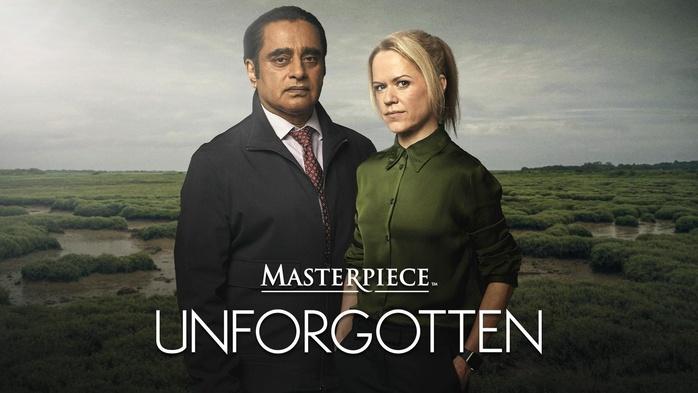



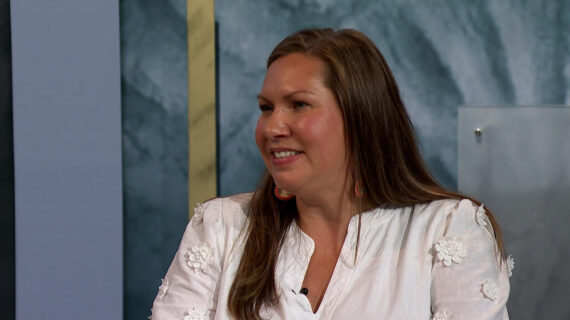


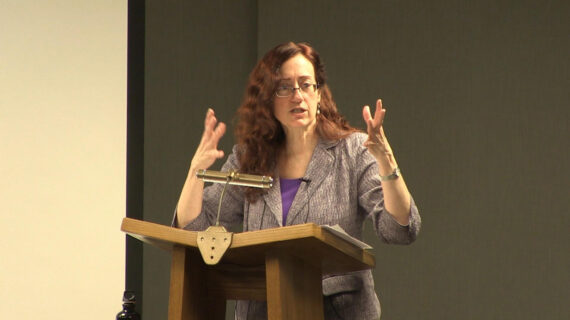
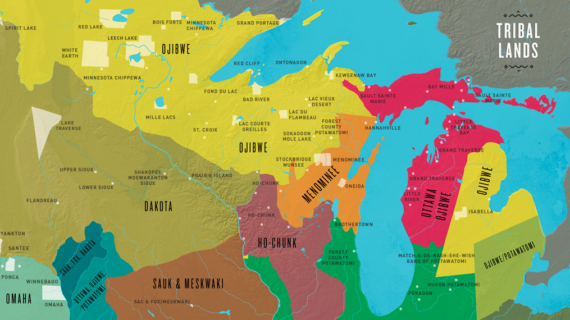

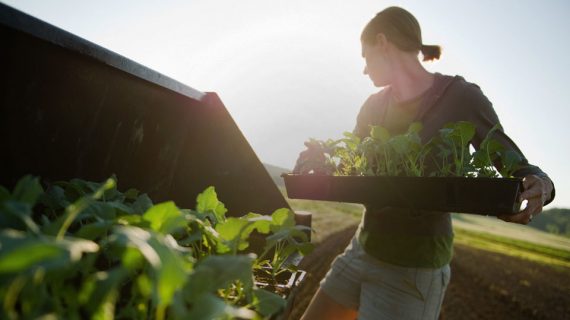




Follow Us